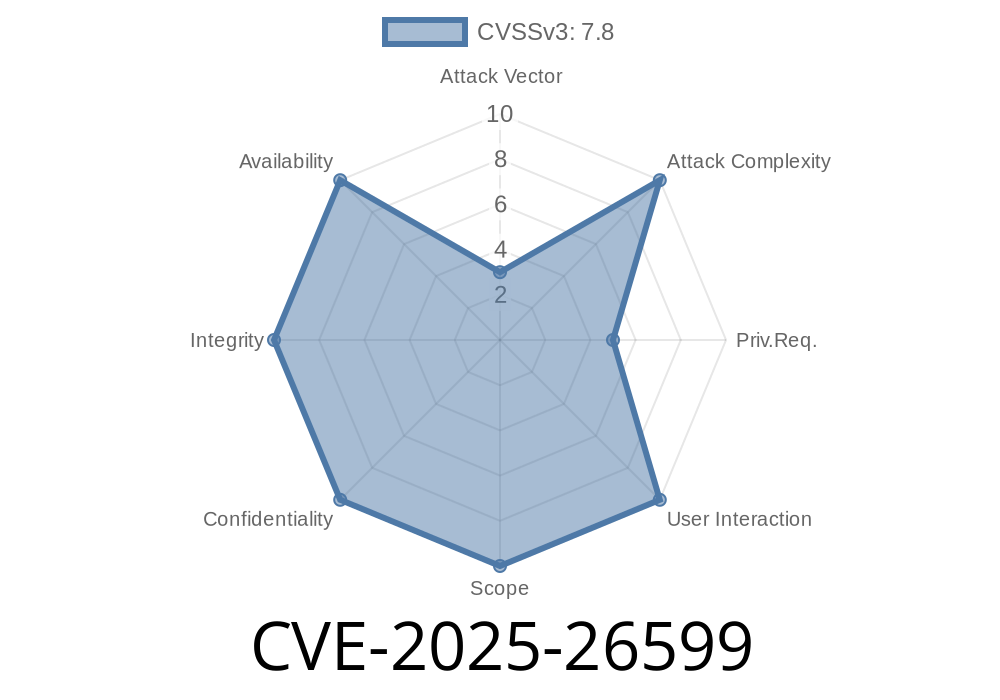In this post, we will be taking an in-depth look at CVE-2025-26599, a vulnerability discovered in X.Org and Xwayland, the popular Linux GUI display servers. This uninitialized pointer vulnerability has the potential to result in serious consequences if exploited. We will start by understanding the details of the vulnerability followed by how it can be exploited and what can be done to mitigate its impact.
We will be using a simple American language so that everyone can easily understand the content. So sit back, relax, and enjoy this exclusive, informative post!
The Vulnerability
An access to an uninitialized pointer flaw was found in X.Org and Xwayland's codebase. This flaw specifically exists within the function compCheckRedirect().
For those unfamiliar with X.Org and Xwayland, they are open-source display servers that provide the graphical environment for Linux and Unix-like systems. Their code can be found on the official repositories:
- X.Org: https://gitlab.freedesktop.org/xorg/xserver
- Xwayland: https://gitlab.freedesktop.org/xorg/xserver/tree/master/hw/xwayland
Now, let's take a closer look at the compCheckRedirect() function in the code. This function may fail if it cannot allocate a backing pixmap (an off-screen buffer used for graphics rendering). In such a situation, the compRedirectWindow() function returns a BadAlloc error. However, there is a caveat – the window tree marked by the earlier function is left unchecked and unvalidated before the error is returned, leaving the validated data partly initialized. This eventually leads to the use of an uninitialized pointer.
The Exploit
To exploit this vulnerability, an attacker requires local access and must craft a malicious program designed to:
Craft specific window trees that will later consume data from an uninitialized pointer.
2. Trigger the flawed program (compCheckRedirect) execution by causing an allocation failure within compCheckRedirect().
Upon successful execution, the attacker can gain access to sensitive information, control program flow, or even crash the system.
Here is a code snippet that demonstrates how the vulnerability can be exploited
// (The attacker would need to start by crafting a specific window tree)
// Create an allocation failure when calling compCheckRedirect()
void trigger_allocation_failure() {
// (Code to create allocation failure)
}
int main() {
// Step 1: Craft specific window trees
// (Code to create the window trees)
// Step 2: Trigger flaw execution
trigger_allocation_failure();
// Step 3: Exploit uninitialized pointer
// (Code to exploit the uninitialized pointer)
}
Please note that this code snippet is just an illustration of the high-level steps required to exploit the vulnerability, and not a fully functional exploit.
Mitigation
In order to mitigate this vulnerability, it is highly recommended that a patch is applied as soon as possible. The patch currently available for X.Org can be found here:
- X.Org: https://gitlab.freedesktop.org/xorg/xserver/-/commit/6757ed4fe0465c54eb1635fe161bd47a21706791
For Xwayland, users are encouraged to update their systems with the latest version of X.Org, as Xwayland is a part of the X.Org code.
Conclusion
CVE-2025-26599 highlights the importance of diligent coding practices and thorough validation during the development process, as seemingly minor flaws can lead to significant vulnerabilities. By applying the necessary patches and maintaining an up-to-date system, users will be better protected from the potential harm caused by this uninitialized pointer flaw in X.Org and Xwayland.
Timeline
Published on: 02/25/2025 16:15:39 UTC
